#henry beaufort 3rd duke of somerset
Explore tagged Tumblr posts
Note
I would like to know3rd Duke of Somerset
Love Story,
You've talked about him before with a lowly woman
Hi! We don't know much about Henry Beaufort's romance/love affair. We only know that his mistress was called Joan Hill and that their affair began sometime before he went into exile in 1461. He probably took her with him to the Continent because their son, Charles Somerset, grew up in Burgundy and was probably born there too, considering the name 'Charles' was unusual among the English nobility but would make perfect sense if Charles of Burgundy (then count of Charolais, the Burgundian heir) was his godfather. Charles of Burgundy and Henry Beaufort became friends in 1460 and it was only through Charolais' intervention that the Duke of Somerset was released from imprisonment in France at a time when Louis XI favoured the Yorkists.
We actually only know that the mother of his child was called Joan Hill because Henry VII granted her an annuity in 1493. As the son of the 3rd Duke of Somerset (albeit an illegitimate one), Charles Somerset was Henry VII's cousin and he joined the king in exile, fighting with him at the Battle of Bosworth. He served as Henry's captain of the King's Yeomen of the Guard, as his ambassador and later as his Lord Chamberlain, a position of ultimate trust, and was made Lord Herbert after his wedding with William Herbert and Mary Woodville's daughter, Elizabeth Herbert. Both Henry VII and Elizabeth of York personally attended their respective cousins' wedding. Somerset was later made a knight of the Garter and was eventually elevated to Earl of Worcester.
#ask#anon#henry beaufort 3rd duke of somerset#joan hill#charles somerset 1st earl of worcester#beaufort tag
5 notes
·
View notes
Note
Is it certain that there is a conflict between Anjou's Margaret and Henry Beaufort? Did he reconcile with Edward IV because he disliked Margaret?
Short answer: no. There's very little evidence of any kind of personal dislike or conflict between them. I suspect that whoever made that kind of claim is someone who believes they "know" what Margaret of Anjou was "really like" and sees her as not only personally responsible for any and all failures on the Lancastrian side but so repulsive a personality that anyone who met her must have really hated her. Which isn't really supported by the evidence and instead speaks more to uncritical acceptance of the view of Margaret found in Yorkist and Tudor narratives and exaggerated by modern day Ricardian and Yorkist writers.
As for Henry Beaufort, Duke of Somerset and his relationship with Margaret, we know very little about the realities of their relationship.
We know they were allies, united in support of the Lancastrian cause headed by Henry VI and Edward of Lancaster. We know that there were rumours that Margaret would "unite with the Duke of Somerset" after convincing Henry VI to abdicate in favour of his son and giving him poison - something that our sole source for this rumour, Prospero di Camulio, Milanese Ambassador to France, reported with scepticism, saying "these are rumours in which I do not repose much confidence".
The claim Margaret was going to "unite with" Somerset might be read as evidence there were rumours that she was having an affair with Somerset. This isn't the space to go into the rumours of Margaret's adultery but we should keep in mind that such accusations were highly politically motivated, intended to attack the reputations of both Margaret and Henry, and we have some evidence that the Earl of Warwick - hardly an unbiased source - was the one spreading the rumours.* In other words: we should be very sceptical of the claim she committed adultery. None of the recorded accusations name the man (or men) that Margaret was purported to have taken as her lover, unless we read the rumour Margaret was going to kill Henry VI and "unite with" Somerset as proof of their affair which... I think could be taken as evidence of an alliance or an affair, rather than absolute truth. We know Camuilo - our sole source for this story and the one about Henry claiming the Holy Spirit had fathered Edward of Lancaster - had his doubts about the veracity of that rumour. There is no evidence that Henry ever abdicated in favour of his son or he was given poison by his wife or Somerset.
Regardless, Somerset has often been speculated to have been Margaret's lover or the father of Edward of Lancaster. So were they lovers or were they bitter enemies? While we don't know, there's a very real chance the answer was "neither". There's no way of knowing if the speculation of later commentators and modern day historians and commentators is true or not and even the idea of Margaret having an affair should be treated sceptically (as I said above).
Now, why did Somerset reconcile with Edward IV instead of continuing to support Lancaster?
We don't know. We don't have evidence that survives to tell us his side of the story. All we have is speculation about his motives.
We know that just before his defection to the Yorkists, he was arrested by Louis XI and was imprisoned for two months (this was not Margaret's fault; he had been on embassy to Charles VII when Charles died and his safe conducts expired, which Louis took advantage of) and then he spent much of the following winter and spring in Bruges. Nathen Amin suggests that this time apart from the main Lancastrian party and living in the "extravagant" Burgundian court caused Somerset to develop doubts about the chances of their cause succeeding:
Somerset was unmarried and still only thirty-five years old, and it is not unfathomable he was concerned about facing decades in exile, flitting around the coast of England without men, money or motivation to truly threaten an increasingly secure Yorkist throne. Disillusionment was understandable, even in a solider as partisan as Somerset.
The idea of Somerset as disillusioned is echoed by B. M. Cron who also sees this as partly Margaret's fault:
He was the leader of the Lancastrians after Margaret herself and yet she appeared to have no use for him. She had not invited him to accompany to France but left him to his own devices in Edinburgh, which for Somerset was not only dull but uncomfortable, after the opulence of the Burgundian court. He did not enjoy being in exile. Somerset was thirty-five and unmarried, and his title and estates and estates had escheated to the crown following his attainder in 1461. His loyalty to King Henry was strong ... but the passive king had proved a disappointment to one of Somerset's ardent temperament.
I don't buy Cron's speculation - we don't necessarily know that Margaret "had no use" for Somerset and it may well have a pragmatic choice to leave Somerset behind so that if anything happened to Margaret, there would still be someone to lead the Lancastrian resistance: both Edward of Lancaster and Henry VI remained in Scotland. It's possible that Somerset's position there was take care of both if Henry's mental health collapsed again or if Margaret was captured or drowned while on embassy.
Susan Higginbotham also points out that Somerset's younger brother, Edmund, was Edward IV's prisoner and he might have been concerned about his brother's circumstances the longer in remained in opposition to Edward IV.
There are reports, recorded in the Paston Letters, that Somerset was seeking reconcilement with Edward and Warwick in September 1462. If he was considering defection then, he still joined the Lancastrians for their attack on Northumberland a month later.
The intended attack had been imagined as "an overwhelming invasion" that would lead to forces flocking to Henry VI's banner. Instead, it was a fizzer. There are a lot of factors involved. The domestic politics of Scotland and France meant their promised support fell well-short of what was needed, the swift, aggressive approach Edward IV took the news of the French-Lancastrian alliance meant that neither Louis XI nor the Duke of Brittany were willing to support the Lancastrians further. The grand invasion became the seizure of a "handful of fortresses" in hope that supporters would rally to them. No such support materialised. Reports of a large Yorkist army convinced Henry and Margaret to leave - obstinately to pick up reinforcements, possibly they feared capture, which would be disastrous to their cause. At any rate, Somerset was left with Jasper Tudor and Sir Ralph Percy to defend of the recaptured castle of Bamburgh with 300 men against the Earl of Warwick who had possibly as high as 20,000 men with him. Lauren Johnson describes them as "not only outgunned but also out-provisioned and outnumbered", and notes that the garrisons were eating their horses to survive by Christmas. Bamburgh surrendered on Christmas Eve.
Somerset might have been able to flee into exile - Jasper Tudor and Lord Roos refused reconciliation with Edward and were permitted to return to Scotland with safe conducts. It's possible that Somerset had that option open to him and made the choice to stay but it's also possible that Edward felt Somerset was too great of a prize to let go or wasn't willing to let him, Tudor and Roos go. At any rate, Somerset had spent a gruelling few months struggling to hold Bamburgh. The looked-for support from France and Scotland failed to eventuate, Henry VI's loyal supporters failed to appear, the king and queen had deserted the field, and he had held out against siege for as long as he could. We can speculate that the siege conditions produced low morale that could have led to desertion or mutiny amongst the 300 men making up the forces at Somerset's disposal. His surrender may have been a practicality or a matter of sheer pragmatism.
We don't know how Margaret (or Henry for that matter) reacted to the news of Somerset's defection to York. We can imagine that Margaret's response was one of grief and fury, seeing it as a profound betrayal. We can just as easily imagine that Margaret found it galling but understood Somerset's position or that she took a pragmatic approach to the news. It is interesting that Johnson describes the Lancastrian reaction to Somerset's defection back to their side in the following terms:
Despite his failure to rouse the town, when Somerset reached Bamburgh he was welcomed back into the Lancastrian fold with open arms. Henry, as always, found it easy to forgive, but the fact that the comrades whom Somerset had abandoned apparently accepted his change of heart suggests it was motivated by genuine feeling.
We also don't know why Somerset defected back to Lancaster. It was unlikely to be because he believed the Lancastrians were about to regain power or that he thought he stood to gain greatly if they were restored. An incident at Northampton, where the townspeople attempted to lynch Somerset before he was rescued by Edward IV and then sent to Chirk Castle in Wales, is frequently supposed to have played a role. Michael Jones and Malcolm Underwood suggest Somerset was "deeply shaken" by the incident and it may well have exposed the fact that whatever favours he had accrued by his defection, he would never really be accepted. Cron suggests the incident showed him that his position was "ambivalent" while Johnson suggests he was "offended" by the "violent rejection". Higginbotham suggests that his stay in Chirk left him isolated and cut off from the royal favour** he had been receiving. Perhaps the stay in Chirk was the first time he felt himself free to really assess his position. For Amin, his defection is a sign of Somerset's greatness of personality:
The duke had, for all intents and purposes, chosen the life of an impoverished, nomadic rebel over that of a valued royal favourite. Perhaps Henry Beaufort, a soldier to his very core, simply yearned to be at the heart of a military movement rather than enjoying the pampered life of a wealthy magnate.
Cron, meanwhile, describes Somerset as an "impulse" that he "gradually came to regret" as he had become the "lap dog" to a man he "felt no loyalty towards". She also suggests that Edward IV's other favourites like Hastings resented Edward's intimacy with Somerset. Amin suggests that John Neville, Lord Montagu was likely to have resented Somerset's restoration given their acrimonious history.
A common theme in these historians' assessments of Somerset's loyalty to Henry VI, who was likely Somerset's godfather. Cron says his loyalties laid with Henry, Amin says "one can only assume he had struggled to truly abandon his innate fidelity" to Henry. Michael Hicks describes Somerset's motivations as such:
What motive then remains? Surely the only possibility is loyalty to the Lancastrian monarch, faith in the legitimacy of the Lancastrian title to the Crown, which was sufficient to outweigh such other considerations as life, liberty, honour, and family. [...] If Somerset broke faith to Edward, he did so not in the expectation of personal reward, but in support of a dynastic principle that he shared with other committed Lancastrians.
This loyalty could have extended to Margaret, either as an extension of his loyalty to Henry or as genuine feeling.
(You can read an ask here by @blackboar and @richmond-rex that discusses Somerset's defection back to Lancaster, which I only looked up after I wrote all this.)
* The Burgundian chronicler, Georges Chastellain, wrote that Warwick spread the rumour that Edward of Lancaster was the result of Margaret's affair with a "wandering player" while Pious II recorded that Warwick complained that Margaret "and those who defile the king's chamber" held the true power.
** Somerset's attainder was reversed and his brother released from prison. Most pointedly, he was shown special favour by Edward IV: they went hunting together, a tournament was thrown in Somerset's honour and they even shared a bed. I am personally a little sceptical of such claims: they bare striking similarities to the accounts of the royal and personal favour shown to Henry, Lord Scrope of Masham by Henry V before his role in the Southampton Plot was revealed. It may be that by exaggerating the excessive favour shown towards Somerset, chroniclers were merely using a trope to show the heinous nature of his betrayal.
Sources
Nathen Amin, The House of Beaufort: The Bastard Line That Captured The Crown (Amberley 2017)
B. M. Cron, Margaret of Anjou and the Men Around Her (History and Heritage Published 2021)
M. A. Hicks, "Edward IV, the Duke of Somerset and Lancastrian Loyalism in the North", Northern History, 20:1 (1984)
Susan Higginbotham, "Henry Beaufort, Duke of Somerset: Died May 15, 1464" (blog post, 2010)
Lauren Johnson, Shadow King: The Life and Death of Henry VI (Head of Zeus 2019)
Michael K. Jones and Malcolm G. Underwood, The King's Mother: Lady Margaret Beaufort, Countess of Richmond and Derby (Cambridge University Press 1992)
J. L. Laynesmith, The Last Medieval Queens (Oxford University Press 2004)
#henry beaufort 3rd duke of somerset#margaret of anjou#ask#anon#wars of the roses#this is going outside my comfort zone so i've tried not to editorialise how i interpret somerset on my research dash#and if anyone has more to add please do#my feeling is that somerset was not unlike richard ii's favourites who accepted henry bolingbroke's kingship#when there was no way to practically resist it without screwing themselves over#but who plotted to restore him when they could
0 notes
Text
Alright folks!
I am back again to ask you some more stupid historical hypotheticals, because I’m having a lot of fun doing these.
This time the hypothetical is…..
There will be multiple parts to this hypothetical, so you can submit figures you’d like to see for the next poll.
Extra clarifications (Please read):
The zombies are slow walking and there will be hostile survivors like in Dead Rising. But the government aren't coming in to do anything about the zombies.
You can be anywhere in the world you want. Not just a mall or city. You can be in florida in the zombie apocalypse.
If you have medication you must take or disability aids like glasses, you automatically get them and don’t have to worry about it.
No nuclear bombs, radiation sickness or diseases like Captain Trips from Stephen King’s the stand (Not dealing with any of those)
#Tumblr#tumblr poll#tumblr polls#hypothetical#hypotheticals#Historical Hypotheticals#History#english monarchy#english history#the wars of the roses#war of the roses#wars of the roses#the tudors#tudor england#Tudors#Henry v#humphrey duke of gloucester#john duke of bedford#richard plantagenet#richard duke of york#Richard Plantagenet 3rd Duke of York#edmund beaufort#edmund duke of somerset#Edmund Beaufort 2nd Duke of Somerset#margaret of anjou#Edward iv#richard iii#henry viii#thomas more#thomas cromwell
24 notes
·
View notes
Note
Sometimes I think we don’t put into perspective that the Wars of the Roses were a lot more personal to the ones closer to power/the throne (like the Beauforts) than to noblemen like the Stanleys. In some ways, we could even say that the conflict between Richard of York and Edmund of Somerset, Henry Beaufort's father, was the very sparkle that started it all. The 3rd Duke seemed to take it on a personal basis, which is understandable considering Henry saw his father be killed in front of him by Warwick’s forces at the first openly armed conflict of the period. Henry himself was injured at St Albans (he had to be carried outside on top of a cart) and then saw his father’s memory be publicly disgraced by York’s faction who received his father’s late office appointments like the Captaincy of Calais. Worse, at the ripe age of nineteen Henry Beaufort was made a ward of the very man who had killed his father, the Earl of Warwick.
That Henry Beaufort took it all personally and saw it much more than politics is also clear by the way he conducted himself whilst Henry VI was still in power. When he was newly created Duke of Somerset, he almost threw hands with the Duke of York at a council meeting. Before said council meeting, he arrived with a heavily armed entourage that got into a skirmish with the city's watchmen at Coventry, a Lancastrian loyalist city. He also had a hostile public altercation with Warwick’s brother (John Neville) in London a few months later, described as marked heavily by ‘dyscencyon and ukyndnesse’. A year later Henry Beaufort banded together with Exeter, Shrewsbury and his own half-brother, Thomas Ros, and this time tried to seize Warwick himself who managed to save himself.
The circumstances surrounding Somerset’s conciliation with Edward IV and later defection are also heavily imbued with what I believe to be personal choices. At the time of his surrender, Edward IV had one of Beaufort's brothers, Edmund, in his custody in the Tower, whilst Somerset himself and other Lancastrian partisans were held under siege at Bamburgh Castle with their supplies running low (a contemporary chronicle suggested they were left with nothing else to eat but their own horses). By reconciling with Edward IV, Henry Beaufort also managed to obtain a pardon for his mother the Dowager Duchess of Somerset and for his half-brother Lord Ros, who received a safe conduct to go into Scotland rather than to reconcile with the Yorkist government.
Once welcomed by Edward IV, though, it’s possible Henry Beaufort was not very comfortable in the same circle where people who had disgraced his family (such as the Nevilles) were also heavily favoured by the new king. At the same time, it’s also likely that Edward IV’s closest allies didn’t tolerate Henry Beaufort very much. When the citizens of Northampton saw Edward IV standing next to Somerset they attempted to lynch the duke, leading Edward to intervene and with ‘fayre speche and grete defeculte savyde hys lyffe for that tyme’. Did the populace spontaneously erupt at the sight of the duke or were they actually instigated against him sometime prior to his coming? If they were instigated, by whom?
According to Gregory's Chronicle, sometime in 1463, Edward IV organised a tournament at Westminster in Somerset’s honour so that Somerset ‘should experience some kind of chivalric sport after his great labour and heaviness’. Apparently, Somerset refused to take part in the jousts and Edward IV, enraged, commanded him to do it again but this time wearing a straw hat (‘a sory hatte of strawe’) in place of a helmet to shame him and punish him for his disobedience. The rest of the tournament contestants rained sufficient violence on the duke to leave him well bruised (‘every man marked him well’) after the jousts, perhaps out of jealousy or personal animosity.
Emma Levitt remarked that ‘Edward’s treatment of Somerset demonstrated his power and control over the duke in front of his noble peers’, in opposition to other more rose-coloured views of the time the Beaufort duke stayed with Edward IV. For the Yorkist king, Somerset’s submission, regarded as the principal member of the exiled Lancastrian faction, sent a very clear message to his subjects and the international community. From Henry Beaufort’s perspective, though, his sojourn at Edward IV’s court doesn’t strike me as easy as it’s often made up to be. Michael Jones also pointed out that London chronicles suggest that Henry Beaufort’s flight was provoked by his fear of those who surrounded the King and the incident at Northampton where the duke had been attacked by a mob.
I tend to agree with this view, although imo Michael Jones fails to take into account the Beauforts' personal animosity towards Warwick when talking about the role played by Henry Beaufort’s brothers during Henry VI’s readeption. Jones says that Henry’s younger brother (Edmund, duke of Somerset after his brother’s execution), made no effort to cooperate with Warwick because Warwick’s agreement with Margaret of Anjou undermined the Beauforts’ prominence in the Lancastrian government. By that time Warwick and his brother John had also been personally responsible for the deaths of Edmund’s father and elder brother. Again, it’s not difficult to see how that would have coloured the actions of the Somerset brothers during the Wars of the Roses.
I would like to know3rd Duke of Somerset?
Henry Beaufort was simply a prominent Lancastrian attempting to avenge his father and secure his estates.
His 1462 reconciliation with Edward IV showed that those two objectives conflicted with each other after Lancastrian defeat. He did try to make peace with the Yorkist. Edward IV really try to reconcile with him and for a time it seemed Henry Beaufort was willing to make peace with him.
History knows what's next: he went back to the Lancastrian faction, fought for Henry VI and lost his land and his life in the process. It shows that the people hyperfocused on the personal interest of individuals in order to explain their allegiance have a dead spot because they can't explain Henry Beaufort's behaviour. He had no self-interest in joining a poor rebellion that had 0 chance to win back the country to Lancaster and little chance to even sustain itself in northern England.
And Beaufort still joined them, because, ultimately, Henry VI is his king. His father died for him. Beaufort and Lancaster are kin. It wasn't enough that Edward IV was more than eager to win Somerset back and friendly, or that Henry VI's rule was terrible. Ultimately his old oath and shared blood mattered more than the preservation of his estates.
The third duke of Somerset, who was willing to risk everything for familial memory and ancestral loyalty, isn't an anomaly. He shares this with the De Veres, the Clifford, Ralph Percy and so many others. The Yorkist side has this too with John Neville torn apart by having to choose between his king and his family (and then his estates), or Hastings dying for his friend's son, or Lovell fighting over and over again against Richard III's foes.
#sorry hope you don't mind me adding#(also sorry for rambling so much)#i just love talking about henry beaufort lol#henry beaufort 3rd duke of somerset#edward iv#beaufort tag#wars of the roses
18 notes
·
View notes
Text
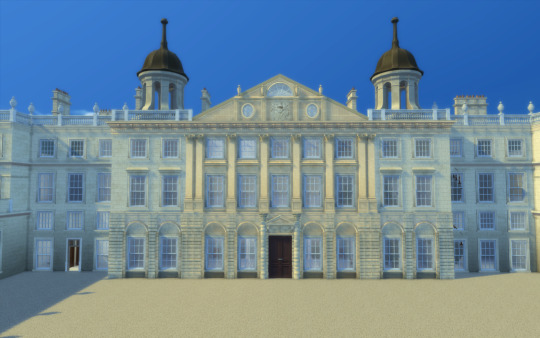









Badminton House
Hi guys!!
I'm sharing another grand english state!
House History: The medieval House was owned by the Boteler family from whom, in 1612, Edward Somerset, fourth Earl of Worcester, purchased the manors of Great and Little Badminton. Some years later, he gave Badminton to one of his sons, Sir Thomas Somerset who was the first to make what would be many significant alterations to the original House.
The Somersets are descended from John of Gaunt, and the dukedom of Beaufort was created by Charles II in 1682, being granted to Sir Thomas’ great nephew, Henry Somerset, 3rd Marquess of Worcester in reward for his service to the Royalists in the Civil War. The first Duke and Duchess carried out extensive works on the House, Gardens and Grounds.
More history: https://www.badmintonestate.com/the-estate/history/
------------------------------------------------------------------------------
This house fits a 64x64 lot and features several impressive rooms, more than 29 bedrooms, a servants hall and several state rooms!
I only decored the main rooms, for you to have a glimpse of the distribution. The rest is up to you, as I have stated that I do not like interiors :P
We warned, I made modifications to the floorplan to fit the church, so that conection with the main house is quite weird.
You will need the usual CC I use: all of Felixandre, The Jim, SYB, Anachrosims, Regal Sims, TGS, The Golden Sanctuary, Dndr recolors, etc.
Please enjoy, comment if you like it and share pictures with me if you use my creations!




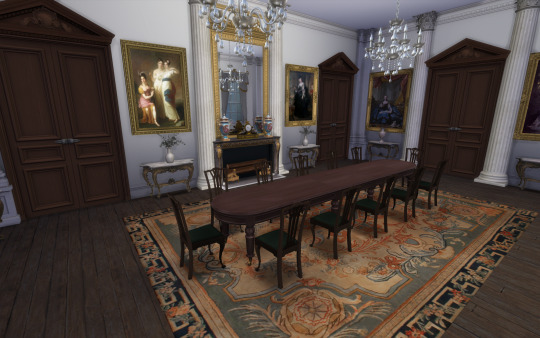
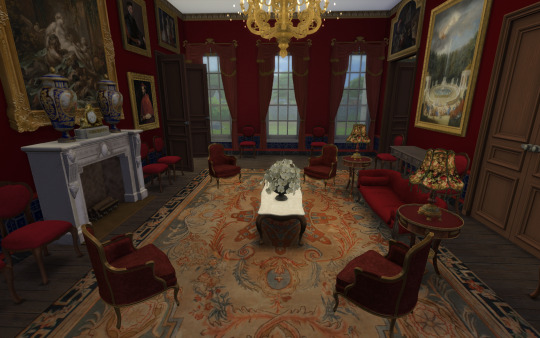

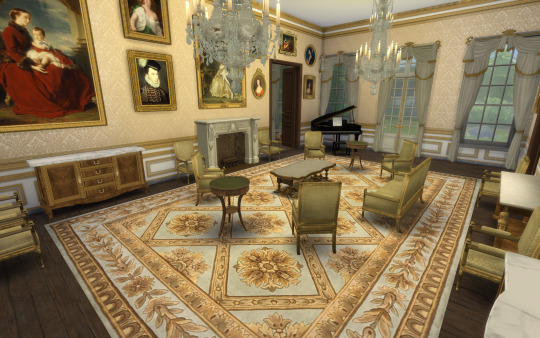








#sims 4 architecture#sims 4 build#sims4#sims4play#sims 4 screenshots#sims 4 historical#sims4building#sims4palace#sims 4 royalty#ts4 download#ts4 simblr#ts4 gameplay#ts4#ts4cc#ts4 legacy#the sims 4#sims 4#sims 4 aesthetic#my sims
87 notes
·
View notes
Note
I always laugh when TG state Aegon III couldn’t possibly have gotten his claim from Rhaenyra because she was never officially recognized as queen. Who did Henry VII (founder of the Tudor dynasty) get his claim from ? Margaret Beaufort, his mother who was never queen. And Henry VII’s claim to the throne was incredibly weak; Margaret Beaufort was only the granddaughter of an illegitimate grandson of Edward III who was explicitly disinherited.
Who is Margaret Beaufort descended from? She comes from Jon of Gaunt's, the Duke of Lancaster, line, and Jon of Gaunt was the 3rd surviving son of Edward III.
This is a family tree of it so things can make sense for people:
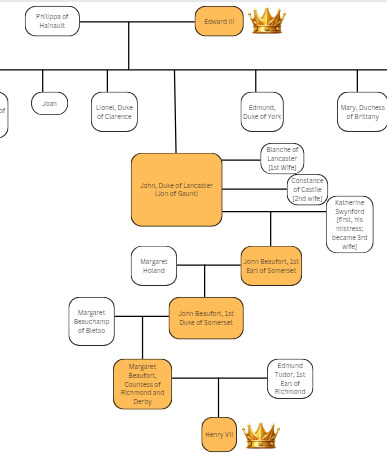
Text to accompany for who can't inspect the image above:
Edward III was of the House Plantagenet, the house where both the houses York & Lancaster came from.
Jon of Gaunt's son--John Beaufort, the 1st Earl of Somerset--himself had a son, who was John Beaufort, the 1st Duke of Somerset. (A lot of "John's"; it was how they sort of made their heirs more legitimate of the power they inherited, by reminding everyone that they were of John of Gaunt's descent. Like how royals do.) Earl John's mother was Jon of Gaunt's mistress Katherine Swynford & they had Earl John before they married, so for a time, Earl John was illegitimate. Some people would say that this makes him eternally illegitimate, but this is a digression.
Margaret Beaufort was Duke John's daughter, but Duke John was born (c.1373) before his parents married (c.1396). Thus Henry VII (her son) did have a wishy-washy claim to the throne through her…yet he still got to become king. Aegon III's claim through Rhaenyra, comparatively, looks a hell of a lot stronger!
And I don't know why they keep ignoring that in the Targ succession list in the back of F&B, it specifically marks Aegon III as "Rhaenyra's son". Not "Viserys' grandchild" nor "Daemon's son". It's "Rhaenyra's son". Compare this to all other Targ kings and who the text ties them to connote where they get the legitimacy of their claim from:
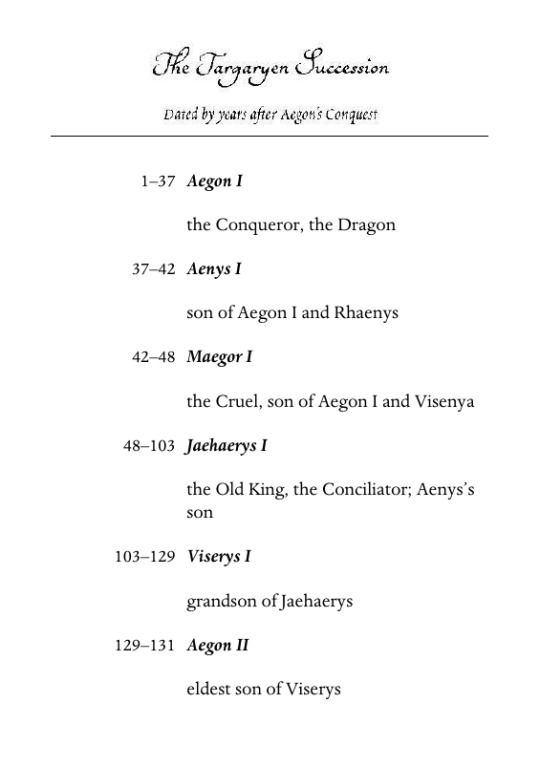
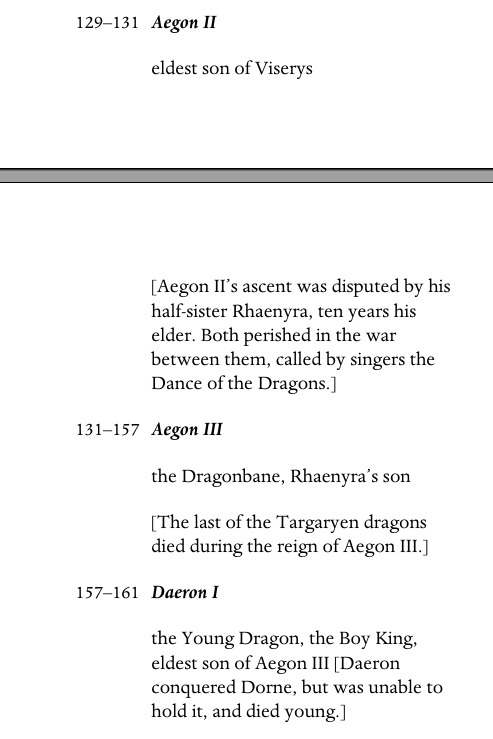
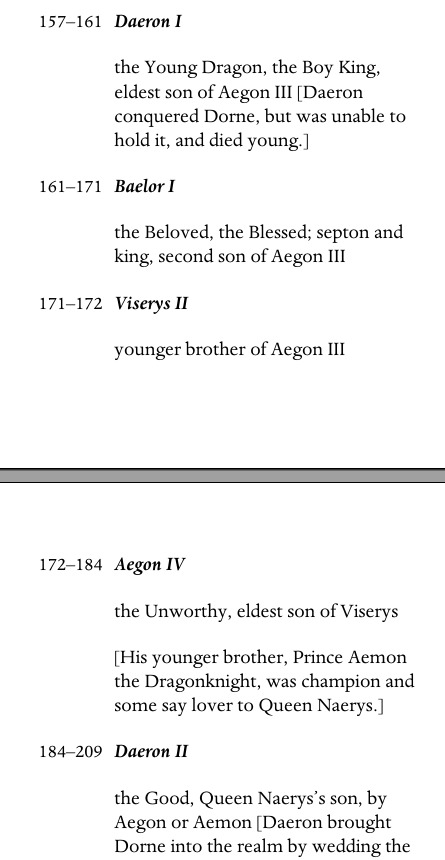
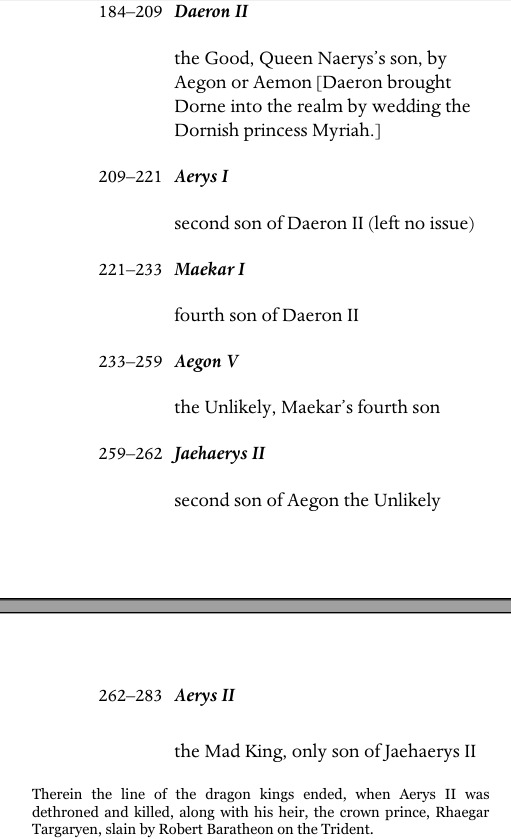
And then people come back asking about how Daeron II has his claim go under Naerys instead of Aegon IV or Aemon, trying to say that this list couldn't possibly show us where these people officially take their claim. I need people to also know that while women/girls do not statistically inherit seats of power like men/boys, but:
what anon says above, which means men have also claimed stuff through a woman related to them somehow when it was convenient AND women have/could receive seats [next point]
in the ASoIaF universe, Rohanne Webber, Agnes Blackwood, Marla Sunderland, Jeyne Arryn, Lyanna Mormount, etc are all women who have before, during, and after Aegon's Conquest have inherited the leadership of their house. Aerea Targaryen, Shiera Blackwood, Aelora Targaryen, and Shireen Baratheon ALL have been named as a man's heir throughout the ASoIaF universe/history! Girls/women are still technically candidates for leadership in Westeros and always have been! But not only that...
the point of a claim is to trace one's blood to an aristocrat FIRST, then gender, with a preference for males but a clear social willingness to use a female relation!
Robert Baratheon allowed & benefited from maesters using his Targaryen grandmother's Targness to add to the legitimacy of his own claim to rule and his war after he won (his grandmother was Rhaelle, daughter of Aegon V & Queen Betha Blackwood [quote below from ACoK, Catelyn II])

#asoiaf asks to me#english history#medieval history#fiction vs reality#westerosi succession#westerosi society#westerosi history#westerosi women#women in westeros
10 notes
·
View notes
Text
Betrayal in the Wars of the Roses, Volume 1
By Dan Moorhouse
Reviewed July 21, 2023 by Kathy.
Disclaimer! I read many of the chapters in this book while it was still a work in progress.
Betrayal, especially in the history books, is often portrayed in basic terms of black or white, good or bad, right or wrong. Those who betray during times of civil strife, such as the Wars of the Roses, often suffer from this kind of two-dimensional thinking. However, the reality is much more complex and nuanced.
Betrayal in the Wars of the Roses, the first volume of a planned three part series, takes a deeper look at some of the better known betrayals in the Wars of the Roses, examining kinship, patronage, and loyalty, helping to put things into context and showing that good lordship was a two way street, with each side having obligations to the other, and if those obligations were not properly filled…well, then, that’s when things could get sticky.
After an introduction that sets the table, we are provided with chapters on the following “betrayers” – George, Duke of Clarence; Richard Neville, 16th Earl of Warwick; Henry Beaufort, 3rd Duke of Somerset; Henry Percy, 4th Earl of Northumberland; Richard Woodville, 1st Earl Rivers; Thomas Stanley, 1st Earl of Derby; and Sir Anthony Trollope. Not only are people looked at in this book of betrayals, the role of towns is also studied with a chapter dedicated each to Calais and York.
While a case can be made for each of the above men being guilty of betrayal, in just about every instance there were mitigating circumstances. And in several cases, it was the king (usually Edward IV) who handled situations in what seemed to me a clumsy manner, leaving me thinking, “It’s no wonder he rebelled!” I won’t go into detailing the information presented for each of the men above, but as an example will present the case of George of Clarence. And no, I’m not going to touch the case of umpteen times great-grandfather Thomas Stanley with the proverbial 10 foot pole.
Now George is often described as a petulant, ungrateful younger brother, never satisfied with what he had and always wanting more. Now, maybe that is true, at least in part, but it’s not the whole story. As a young man, George had seen his sister Margaret make a high-status marriage, while his own wishes for an equally prominent marriage were nixed by, who else, his brother the king. He was granted significant wealth but his proposed expenses that included lavish improvements to Tutbury Castle outreached his income. I think today we’d say that George liked living beyond his means. He was appointed Lieutenant of Ireland, an office his father once held, but later had his right to govern as his father had curtailed. There were other issues, but these will do for this example and will show that while some of George’s problems were of his own making, not all of them were, and if these matters had been handled differently by Edward, it is possible that some of the tragedies in George’s life might have been avoided.
In the end, the question of betrayal has to be looked at through the lens of family relationships, which were extremely important in medieval England, who one owed the most loyalty to (kin or king?), and whether the principles of good lordship were observed by all parties. And when it came to loyalty to the Crown, what exactly are we referring to – the institution of kingship, or the individual sitting on the throne?
This book is filled with enough details and quotes from original documents to satisfy the geekiest of history geeks, yet remains readable and entertaining, and it even got me to question some previously held beliefs. So while I may never completely forgive my great-great (etc) grandfather for betraying Richard III, I at least have a better understanding of why he made the choices he did.
https://mybook.to/Betrayal-paperback
https://mybook.to/Betrayal-paperback

2 notes
·
View notes
Text
I remember hearing or reading once a criticism about The Tudors TV show [I don't remember who by but I think it was either from someone here on Tumblr or someone on Tiktok, dunno, don't quote me on where from] and their opinion on the whole Buckingham plot because "There was no living Duke of Buckingham during Henry 8's reign" and its always bugged me.
Did you forget about Edward Stafford, Duke of Buckingham?? Nephew of Elizabeth Woodville and Edward IV. Son of Henry Stafford, Duke of Buckingham (executed by Richard iii) and Katherine Woodville.
Dude was executed for treason in 1521. Henry personally gathered the evidence against him, he was tried before 17 people, and convicted. He was accused of listening to prophecy about the kings death and intending to kill the king.
Like yes, he's majorly fictionalized - technically and a shit load of key facts are missing from The Tudors portrayal but the guy did exist. He was executed by Henry.
In The Tudors, he claims to be a descendant of King Edward III, which means he has a claim to the throne, which is True. Edward III -> Thomas of Woodstock -> Anne of Glouster -> Humphrey Stafford (1st Duke of Buckingham) -> Humphrey Stafford (Earl of Stafford) -> Henry Stafford (2nd Duke of Buckingham) -> *Edward Stafford, 3rd Duke of Buckingham*.
And technically speaking, I do believe that does in fact give him a claim by blood, but Henry's father won the throne by battle then legitimized his claim via marrying Elizabeth of York - she herself a granddaughter of Edward III via his sons Lionel and Edmund :: Edward III -> Lionel of Antwerp (Duke of Clarence) -> Philippa (Countess of Ulster) -> Roger Mortimer (Earl of March) -> Anne de Mortimer [m. Richard of Conisburgh] -> Richard Plantagent (3rd Duke of York) -> Edward IV -> **Elizabeth of York** -> *Henry VIII*
/
Edward III -> Edmund of Langley (1st Duke of York) -> Richard of Conisburgh (Earl of Combridge) -> Richard Plantagent (3rd Duke of York) -> Edward IV -> **Elizabeth of York** -> *Henry VIII*.
And Henry ViI obviously had a claim himself from Edward III as well, but it was considered a 'weaker' claim because it came from his mother and not his father. Edward III -> John of Gaunt (Duke of Lancaster) -> John Beaufort (1st Earl of Somerset) -> John Beaufort (1st Duke of Somerset) -> Margaret Beaufort -> **Henry VII** -> *Henry VIII*.
They all have claim. Henry VIII's is older actually, because his claim come from the three elder siblings of Buckingham's claimant-ancestor. [Lionel of Antwerp, John of Gaunt, and Edmund of Langley were all older the Thomas of Woodstock].
And as far as I can tell, Buckingham was never actively going against Henry VIII, but he was charged for treason. He was executed. That was not made up.
The Tudors has a LOT wrong with its accuracy but you can find better things to complain about. This one, while very fictionalized and dramatized is technically accurate.
#The Tudors#The Tudors inaccuracies#The Tudors accuracies#Henry Viii#Henry viii of england#Henry Tudor#Edward Stafford Duke of Buckingham
1 note
·
View note
Photo

Military Leaders and Commanders of the House of Beaufort during the Wars of the Roses
#Edmund Beaufort#Edmund Beaufort 4th Duke of Somerset#Henry Beaufort 3rd Duke of Somerset#John Beaufort Marquess of Dorset#The House of Lancaster#EddysEdit
22 notes
·
View notes
Text
A very public and messy divorce – Beaufort v Beaufort
A very public and messy divorce – Beaufort v Beaufort
Today’s post is a little unusual, as I welcome back legal eagle, Mel Barnes who has worked with me in a joint article, to tell the story of a very messy divorce (quite literally), as you’ll discover later. As most of us know from experience, the golden rule when talking to someone about their divorce is that almost always, ‘the other spouse is always to blame’, a principle enshrined in natural…
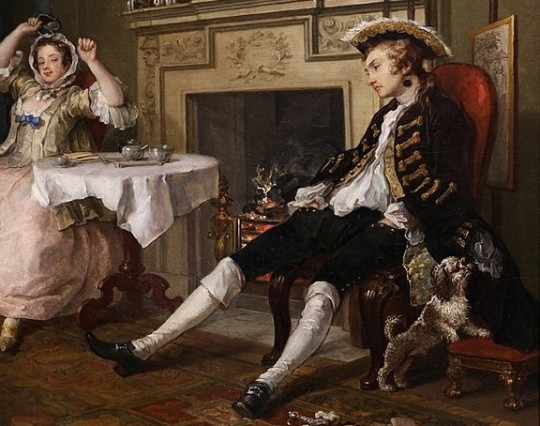
View On WordPress
#Dissolution and Separation Act 2020#Divorce#Divorce in the 18th century#Frances Scudamore#Henry Somerset#Lord William Talbot#Mary de Cardonnel#Melanie Barnes#the 3rd Duke of Beaufort
0 notes
Note
What's your favourite Wars of the Roses antics asdfsdfghkjj wanna guess how many I'll get right
Oh, I'll be considering my favourite diva moments aka the most dramatic antics those funky little men pulled during the wars. Of course, a chunk of them was something Warwick did, whether it's him claiming the Queen of England tried to kill him with a poker, saying he would see the king until two o'clock or he would die, or slaying his horse before (during?) the battle to show to his soldiers he wouldn't flee, Warwick surely deserves the drama king crown. More under the cut!
send me “what’s your favorite..” asks 💫
I love other dramatic things people did because of Warwick such as Margaret of Anjou demanding he knelt before she pardoned him or Henry Beaufort (Somerset) colluding with Exeter and other orphans from St Albans to chase Warwick down the streets and kill him. I have to love Somerset as well, the man was so bent on avenging his father (though, to be fair, seeing your father slain in front of you only to be 'adopted' by his killer would probably do that to you).
Whether it's Somerset almost getting into a fistfight with York during a council session or getting into Conventry with a bunch of armed men to attack the Yorkists only to get into a fight with the mayor and his men instead...... that man had issues. What to say about the time Warwick, Salisbury and the future Edward IV captured Richard and Anthony Woodville and threw a handful of insults at them (and Anthony fought back with insults of his own?? KING).... the awkwardness of it all when they all became family lmao
Also the time Jasper Tudor invoked every cousin up to the 7th degree in Wales to avenge his father's death and kill the Herberts and the future Edward IV, only to be included in Edward's 'unpardonables' list a while later. Then when he managed to actually kill one of those men ten years later (Roger Vaughan) when Vaughan was sent to kill him instead — and he was aided by a priest no less! Which makes sense after I learnt Vaughan was a church desecrator! Goodness. Jasper said he would show him as much mercy as Vaughan showed his father....... iconique.
York entering London in all pomp blazing royal emblems left and right only to be met with silence at parliament when he laid his hand on the throne.... one has to laugh, no one really trusted the man who said he would never hurt 'his most Christian king' only to send an attack not long after. Also, bless Henry VI for his Loveday reconciliation - just the right amount of drama that those petty lords deserved.
What else? Oxford convincing his gaoler to set him free and flee with him to Henry Tudor... 10/10 Lancastrian advertising. Wasn't he the one who convinced Warwick to not turn his back on the Lancastrian cause in 1471 as well? That man had some persuasion skills, I'm sure! Also, I read somewhere that he tried to flee his prison before 1485 and broke a leg in the process.... tough guy (™).
Also the time Jasper Tudor fled a siege by dressing up as a peasant and carrying a pea basket on his back! That man truly was the James Bond of the Wars of the Roses, the sheer amount of times he managed to get in and out of sieges... probably all in that same way. I think he was the one who proposed to his nephew that Henry dressed as a commoner to flee from Brittany to France because that's just his style.
Speaking of Henry Tudor, what to say about the time he faked being ill and fled to a church as he was about to be taken back to England, and then was defended by a bunch of random locals in St Malo? Iconic behaviour. Same energy, I suppose, when Perkin Warbeck tried to invade England by landing in Kent only to have his soldiers massacred by the locals who simply did not want him lmao.
Well, that's all the antics I remember now! Thanks so much for sending this ask hashjh it was fun! 🌹x
send me “what’s your favorite..” asks 💫
#what's your favourite ask#richard neville 16th earl of warwick#henry beaufort 3rd duke of somerset#margaret of anjou#richard duke of york#jasper tudor#henry vii#john de vere 13th earl of oxford#anthony woodville
31 notes
·
View notes
Text
Fantasy Guide to Royal Households and How they Work

When I say Households, I mean the entourage that follows around the royal family. The household went everywhere with them to care for their needs from the people who would empty their chamber pots to their noble companions. Most royal households are basically the same as noble ones, only on grander scale. Every royal had a household and an entourage as well as every noble at court.
Palace Personnel ~ The Commons
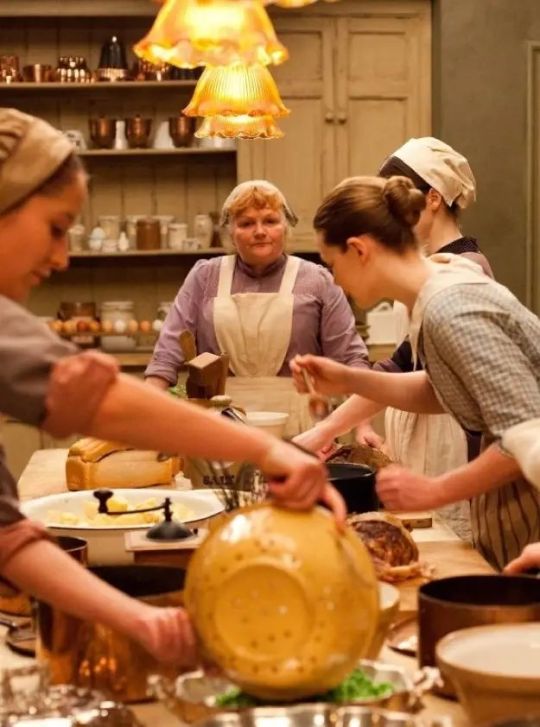
The commons were an intregal part of every household. They made up perhaps 80% of the work force. Royal courts were often on the road and never spent more than a few months at every palace. The court was constantly moving. Some positions were not permanent, meaning certain servants did not travel with the court because they were employed at the palace only. They would be paid by the Monarch's paymaster.
Scullion: The scullion was a relatively easy position to fill so they were often changed as the court went from palace to palace. They would be responsible for scrubbing and cleaning the servants quarters and the kitchens. They would scrub floors with lye, scour pots with sand, sweep put the fireplace and clean up after the other servants. They were the first to rise in a castle and tasked to light all the fires in the kitchens. Scullions would just be employed to the palace and serve a multitude of chambers
Laundress: The laundress was responsible for the cleaning of anything made of fabric in the household. Since they are handling unmentionables, they knew what happened behind closed bedchamber doors. They knew when the King visited the Queen or hadn't, they knew when marriages were consummated or not and they knew when the Queen and royal women were not pregnant. They often sold secrets to pad their pockets. Laundresses might be permanent staff but sometimes not.
Minstrels: The minstrel was a commoner hired to play an instrument or sing for the entertainment of the royal. A royal might staff a few at a time but they would always have one on hand. The minstrel would likely come with their masters as they travelled. The minstrel might serve the main royal household but a royal might retain their own.
Cook: The cook was one of the most important servants in the household. They would have the task of overseeing the running of the kitchens and keeping supplies in order. They would likely be on call at all times. Henry VIII's cook was often woken in the night because his royal master wanted a midnight snack. The cook was a valued member of the household and would have been highly sought after if they were a very skilled cook. They would have travelled with the joint. Cooks were apart of the greater royal household but often royals retained private cooks for their own use.
Maidservant: The maidservant cleans the castle. She would sweep the floors, scrub them, empty the chamberpots, get rid of the ashes from the fire and ready the fire for later. She would make up the bed or strip it for the laundresses. She would wash anything that needed washing including furniture and ornaments. She was likely not a travelling servant and would be strictly employed at a single palace.
Jester: The jester was the hired entertainer. Working under the master of revels, the jester had the daunting task of making the monarch and their family laugh. They would tell jokes, tell stories, cause havoc in the court for laughs and lighten the mood. The most successful jester of all time was Will Somers, jester to Henry VIII. Will broke bad news to the infamously bad tempered monarch and got away with things that would have sent others to the block. Will survived most of Henry's reign, his head intact. Jesters would be apart of the main household though each royal might have one of their own.
Positions within the Royal Household ~ Noble
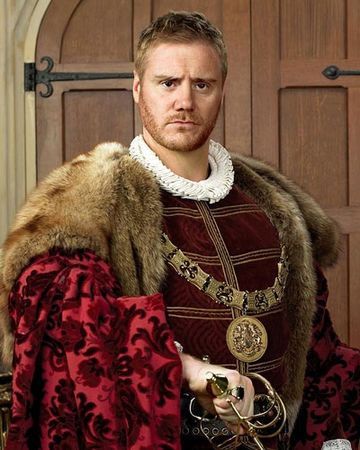
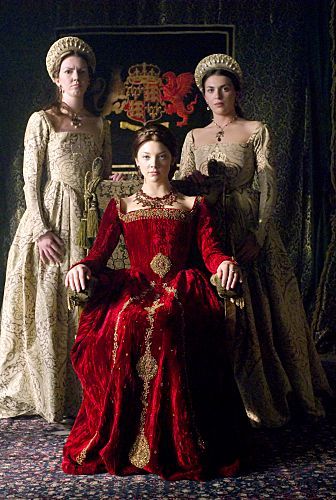
Nobility were always welcomed at court. They eat at court, slept at court and were cared for by the monarch. Some nobles had to sing for their supper and most were hired as royal servants. They weren't exactly scrubbing floors and would be paid handsomely with land that would generate wealth for them
The Steward/Seneschal: This person was the head of the royal's staff. They would have the task of running the lands and servants their master or mistress. The steward served as a backup and assistant in all the tasks even representing their master or mistress when they were unavailable. Would be a high ranking noble. Each royal household would have them.
Treasurer of the Household: The treasurer was the accountant and pay master. They would be in charge of ensuring debts were settled, wages were paid and the household was running within the budget. This was a coveted position because it gave the treasurer insight into the financial situations of the royals. Such info was wroth its weight in gold. Each royal would have one.
Usher: The Gentleman Usher would be in charge of escorting guests into the royal chambers and into the royal presence. They would act as a go between their royal master/mistress and the guest often going back and forth with messages. It was just as coveted as the position of chamberlain but with less responsibilities.
Master of Horse: The Master of Horse was in charge of seeing to the horses of their master. They would oversee the grooms or the stableboy/hands who were employed at the stables to actually care for the horses. The master of horse would ensure that the stables were in order and the horses were up to parr in order to bear royalty across the kingdom. Each royal would have one but there would a main one who acted as overseer.
Master of the Wardrobe/Mistress of the Robes: These are the nobility who are employed to look after the clothes of the royal they serve. This would mainly involve a managerial position, overseeing the inventory of the royal wardrobe (a warehouse like building that housed the clothing) and placing orders for new clothes. It was a tidy job that rarely involved getting the hands dirty. Each royal would have one.
Chamberlain/Valet: The chamberlain is employed to look after the Lord's bedchamber. This was the most sought out position as they effectively were the gateway into the royal presence. Their main task was making sure their boss was comfortable and happy. Could be a well born commoner or a noble. Each royal would have one.
The Page: All royal households had pages. They would be a young noble boy about seven years old sent to their royal master. He would be in charge of tidying up after the lord, carrying messages to other servants and occupants of the castle and serving him at meals. Unlike others on the list, the page would not be paid. His experience was his payment as he would learn the running of a court and how to be courtier. Each royal would have one.
Squires: Squires were like pages though they only served the men. They would accompany their royal master to battle, look after his armour and mail, ensure that his lord's horse was saddled, caring for their master's weapons. The squire would always be a young nobleman on the cusp of becoming a knight.
Governess: The governess is a noblewoman woman employed to oversee the Monarch's children's household. She would be the first teacher a royal child would have and would oversee the nursemaids who would have care of the physical person of the child. She would be appointed when the child was four or five. Notable governesses include Katherine Swynford (wife of John of Gaunt and mother to the Beaufort line), Margaret Pole (wife of Tudor Loyal Sir Richard Pole, sister of the last York heir Edward of Warwick, daughter of George Duke of Clarence and niece to King Edward VI and Richard III), Kat Ashley, Margaret Bryan, Madame de Maintenon and Baroness Lehzen. Most unmarried Princesses retained their governesses while Princes generally outgrew their governesses after they were breeched.
Gentlemen of the Privy Chamber: They were the male companions of a King or Prince, sort of like ladies in waiting but manly. They would accompany the King or Prince everywhere they would go and shared duties with Groom of the Stool (royal toilet paper dispenser) and the Chief Gentleman of the Chamber (overseeing the staff and maintaining the chamber). They would help their master get ready, serve him at the table and organize hunting and games to keep him entertained. Gentlemen and companions where often chosen for their connections as well as their master's own opinion. Henry VIII's gentlemen included: Sir William Compton (ward of Henry VII and heir to rich lands), Sir Henry Norris (the grandson of William Norris who fought with Henry's father at Stroke and a relation to the Yorkists Lovells), Sir Anthony Denny (son of Sir Edmund Denny Baron of the Exchequer) Sir Michael Stanhope (brother in law to Edward Seymour, Duke of Somerset), Charles Brandon (ward of Henry VII and son of Tudor Loyalists)
Ladies in Waiting and Maids in Waiting or Maids of Honour: These are the female attendants to the Queen or Princess. Ladies in Waiting were married while the Maids were unmarried. They would have to attend their mistress wherever she went, help her get ready, keep her chambers in order, write letters for the Queen and maintaining her honour. They were chosen for their connections. Using Katherine of Aragon as an example, her Ladies in Waiting included: Maria de Salinas (daughter of Juan Sancriz de Salinas secretary to Isabella, Princess of Portugal and a Spanish courtier in the service to Katherine's parents, wife of Baron Willoughby de Ersby), Elizabeth Howard (the daughter of Thomas Howard, 2nd Duke of Norfolk, sister to Thomas Howard, 3rd Duke of Norfolk and wife to Thomas Boleyn, ambassador to France), Anne Hastings (daughter of William Hastings, 1st Baron Hastings, wife to George Talbot, Earl of Shrewsbury and Lord Steward.), Agnes Tilney (wife to Thomas Howard, Earl of and 2nd Duke of Norfolk.), Elizabeth Scrope (wife of John de Vere, Earl of Oxford, a loyal Tudor lord), Margaret Scrope (wife of Sir Edmund de la Pole, Earl of Suffolk cousin to the King), Anne Stafford (sister of the Duke of Buckingham, married Sir George Hastings, Earl of Huntington and daughter of Henry Stafford, 2nd Duke of Buckingham (cousin to the King) and Lady Katherine Woodville (sister of King Henry VIII's grandmother and his great aunt by her marriage), Elizabeth Stafford (sister to Anne Stafford wife Robert Radcliffe, Lord Fitzwalter and Earl of Sussex around). Their connections are what got them their places and you can see why they were chosen.
Accommodation
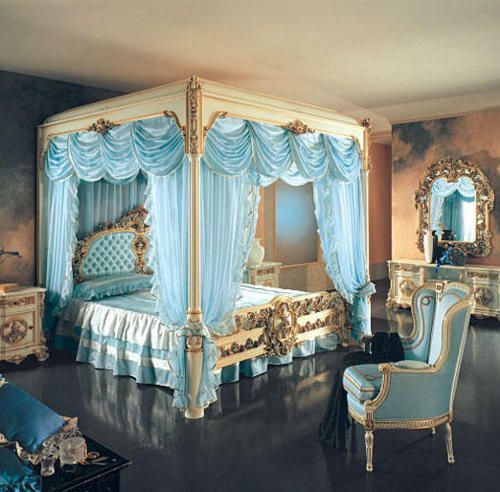
Accommodation can be a difficult thing to sort both as a writer and a steward. You might have a palace of 200+ bedchambers in which you must house a staff of 500-/+, a varying amount of nobles, the royal family (of a varying amount) and their own households. When assigning rooms it is best to think of a Russian nesting doll. Start from the inside and work your way to the outside.
The best rooms go to the monarch, their consort and their children/siblings/parent(s). These chambers would include the bedroom, a drawing room/ common area, a privy, a closet (a small chamber that can be used for prayer or work). They would be furnished with the best cloth, the best candles and whatever furniture brought by the resident since most royal courts travelled from palace to palace. They will also have chambers for their personal servants such as ladies in waiting and grooms.
The second best set of rooms would go to the highest ranking nobles/people in the court. These rooms would be less fancy and a little smaller. These would be given to from titled nobility descending from those of Ducal rank (Dukes/Duchesses) or even members of the council such as Thomas Cromwell in Tudor times.
The next set would be considerably smaller, perhaps minus a closet or a drawing room. Given to lower nobility.
The next level of chambers would be smaller perhaps only the bedroom and a common area given to minor nobles.
The last set of rooms would be small and only hold enough room for a bedroom. Servants would have to sleep on the ground on pallets beside their masters.
Any other guests at court would have to stay at off-site locations around the palace in the city. Some nobles at houses around major palaces just in case they arrived late or were kicked out of court.
#Fantasy Guide#Households#royal courts#royal households#request#courtiers#nobility#Nobles#royal palaces#writing#writing resources#writing reference#writing advice#writer#writeblr#writer's problems#spilled words#writer's life#characters#writing advice writing resources#writing advice writing reference#writing reference writing resources
18K notes
·
View notes
Text
We are back for another historical hypothetical folks!
And this time it is:
Think of it as a Midsomer Murders/Clue style thing.
I don’t have an answer for who the victim is. You can choose anyone you want, for the victim.
#historical hypotheticals#historical hypothetical#Polls#tumblr poll#Tumblr polls#historical polls#war of the roses#the war of the roses#wars of the roses#tudors#the Tudors#Tudor England#Henry v#humphrey duke of gloucester#john duke of bedford#richard duke of york#richard plantagenet#edmund duke of somerset#edmund beaufort#richard neville#Richard Earl of Warwick#margaret of anjou#Henry Vi#edward iv#richard iii#henry viii#thomas more#thomas cromwell
124 notes
·
View notes
Text
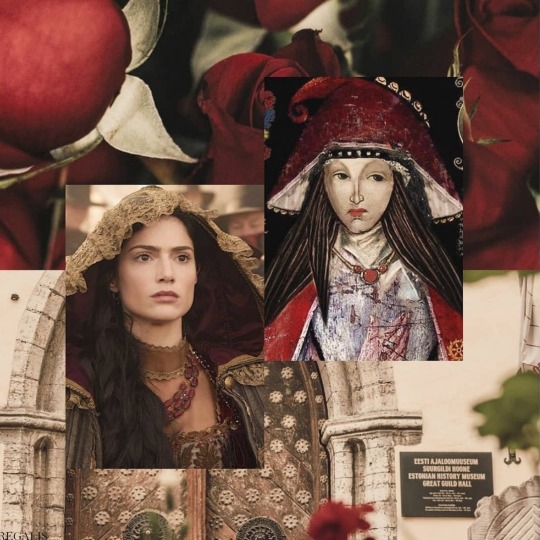
Katherine Swynford, Duchess of Lancaster was probably born in 1350, in Hainault. John of Gaunt's epitaph says the Duchess came from 'a knightly family': she was born Katherine de Roët, as she was the daughter of Paon de Roët (also spelled Payne), a herald and knight who was introduced to the English court by Queen Philippa, a fellow Hainaulter and Edward III's wife. Therefore, Katherine Swynford was raised at the English court from the age of two or so. It is uncertain who the mother is. She had three siblings: two sisters, Isabel (or Elizabeth) and Philippa, and a brother, Walter. Philippa married Geoffrey Chaucer, considered the greatest poet of the middle ages.
Katherine was married to Sir Hugh Swynford, but the year is unknown. It is speculated that it might have been 1366-7. Together they had three children: Blanche Swynford, Sir Thomas Swynford and Margaret Swynford, who became a nun. It is not possible to say whether the marriage was a happy or unhappy one, because Katherine Swynford was very young when they were wed and Sir Hugh was a soldier who served in campaigns for a long time. Katherine was governess to John of Gaunt's daughters Philippa of Lancaster and Elizabeth of Lancaster. He also stood as Godfather to her daughter Blanche. Sir Hugh Swynford died on the 13th of November 1371 when Katherine Swynford must've been only 21. Around that time, her and John of Gaunt begun their love affair. They claimed that they were not involved before the death of Katherine Swynford's husband. On the 13th of January 1396, the couple was finally married, Katherine Swynford becoming Duchess of Lancaster. This was two years after the death of John's second wife, Constance of Castile. They were married at Lincoln Cathedral and together they had four children: John Beaufort, 1st Earl of Somerset (1373–1410), Henry, Cardinal Beaufort (1375–1447), Thomas Beaufort, Duke of Exeter (1377–1426) and Joan Beaufort, Countess of Westmorland (1379–1440). John of Gaunt died on the 3rd of February 1399 at Leicester Castle and the Dowager Duchess of Lancaster lived in Lincoln. Her son Henry was Bishop of Lincoln.
Her children by John of Gaunt were legitimised twice by the Parliament of King Richard II (1390, 1397) and by Pope Boniface IX in September 1396 but they were barred from succession to the throne by their half-brother, Henry IV. However, Henry VII was a descendant of John of Gaunt and Katherine Swynford through his mother, Lady Margaret Beaufort, and so are all the English monarchs ever since.
Katherine Swynford died on 10 May 1403.
66 notes
·
View notes
Photo

On July 3rd 1449 King James II married Mary of Guelders and took formal control of his Kingdom three months short of his 19th birthday.
Mary of Guelders was born circa 1434 at Grave in the Netherlands, she was the daughter of Arnold, Duke of Guelders, and Catherine of Cleves. Catherine was a great-aunt of Henry VIII's fourth wife Anne of Cleves.
When she was twelve years old, Mary was sent to Brussels to live at the court of her great uncle Phillip, Duke of Burgundy and his wife Isabella of Portugal, where she served as lady-in-waiting to the Duchess of Burgundy's daughter-in-law, Catherine of Valois, the daughter of Charles VII King of France and future queen of England.
In April 1449 Mary was betrothed to James and arrived on Scottish shores on 18th June, marrying on July 3rd. The marriage produced 5 children including the future James III.
In 1460, James involved himself in the English dynastic struggle, the Wars of the Roses, placing his weight behind the Lancastrians, his mother Joan Beaufort's family, and hoping for some personal gain, he attempted to recover Roxburgh, one of the last Scottish Castles held by the English since the Wars of Independence.
On 3rd August, 1460, while in the course of attacking the town, a cannon exploded killing the King of Scots outright. Lindsay of Pitscottie wrote in his history of James' reign
"as the King stood near a piece of artillery, his thigh bone was dug in two with a piece of misframed gun that brake in shooting, by which he was stricken to the ground and died hastily."
James III was crowned on 10 August and Mary was given official custody of the King and acted as regent.
Mary was caught up in the Wars of the Roses in England and followed her husband’s policy of playing off the Yorkists and Lancastrians to Scotland’s advantage. A marriage between Edward, Prince of Wales and her eldest daughter Mary was considered but with the Yorkist victory of the Battle of Towton that seemed a long way off. Margaret of Anjou, Edward and the Dukes of Exeter and Somerset fled to Scotland and Mary allowed them to stay for a year before writing to Edward IV to consider a truce.
Eventually, Margaret of Anjou and her party left Scotland after Mary paid them a substantial sum. It’s possible Mary even considered marrying Edward IV herself. However, she was once again a reluctant participant in Margaret of Anjou’s cause in 1463. The military campaign at Norham Castle was a complete failure, and Margaret of Anjou departed for Burgundy.
Later that same year Mary fell seriously, and she died a few months later on 1st December 1463. Her final resting place is under debate, but she’s probably buried in Holyrood Abbey. Her reputation was somewhat blackened in the years following her death, and she was accused of having had affairs with the Duke of Somerset and one Adam Hepburn, but those accusations are most likely untrue.
Her son was still only 14 years when she died, and he continued to be under a regency until 1469.
There's a more in-depth study of her life here https://thefreelancehistorywriter.com/2012/10/13/mary-of-guelders-queen-of-scots/
The pic is a "Tableau Vivant with the Marriage of James II of Scotland to Mary of Gelre-Egmond in 1449 by Pieter but dates to about 200 years later.
15 notes
·
View notes
Photo



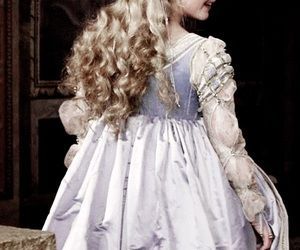
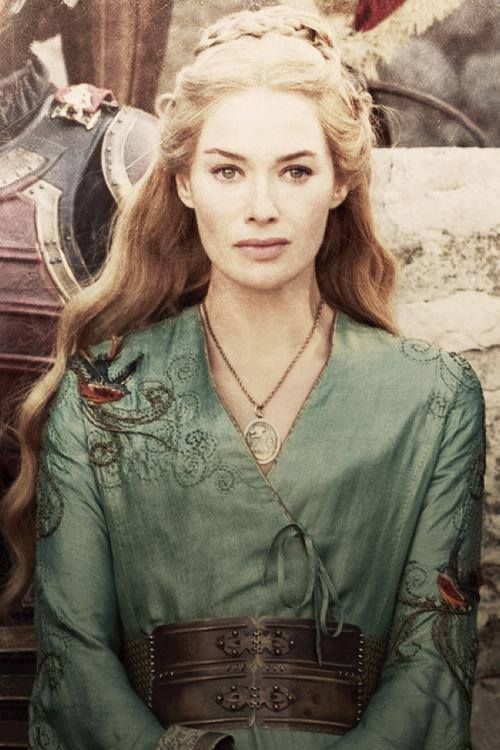

Alternative universe: the story of Margaret Tudor, duchess of Somerset; countess of Rivers; countess of Oxford.
Born: summer, 1440. Dead: winter, 1520.
Mother: Catherine of Valois, Princess of France and Queen of England.
Father: Owen Tudor, a welsh courtier.
Siblings: Edmund Tudor, Earl of Richmond; Jasper Tudor, Earl of Pembroke and later Duke of Bedford; Owen Tudor, a monk; Daffydd Tudor, a knight.
Wife to: Henry Beaufort, 3rd duke of Somerset; Anthony Woodville, Earl Rivers; John de Vere, 13th Earl of Oxford.
-//-
Summer 1440, Hatfield Palace.
In the first hours of a day of late June that year of 1440, former queen of England, Catherine de Valois, struggled to give birth one last time at Hatfield Palace, usual home place of powerful bishops. It was an experience that she was much accostumed to: she was only twenty years of age by the time she gave birth to her royal son, the current king Henry VI of England. After she took the man responsible for her wardrobe as a second husband, the handsome welshman responsible for capturing her heart, Catherine delivered three healthy sons. Edmund, Jasper and Owen, she loved all of them dearly.
Watch them grow, despite the difficult circumnstances ultimately provoked by her former brother by law Humphrey, Duke of Gloucester, was a privilege Catherine had much to be thankful for. She lived a quiet life, away from that troublesome court, every now and then in touch with her oldest boy.
But now, she grew weaker at every effor as she was told to push the baby. Once she did, though, a midwife held the newborn in her arms and told the french princess that this time... the child was a girl.
“A girl”, whispered Catherine, faintly. “Oh, thank the Lord! I’ve been longing for a girl!”
The midwife smiled upon Catherine and slowly gave the baby, now cleansed, to the dowager queen’s arms.
“How should be named?”
In return, Catherine beamed.
“Margaret”, she told the woman. “After my lover’s late mother.”
* * *
Margaret’s early years were not easy. Her mother died as a result of complications due to her long labour. Her half-brother’s council was outraged because Queen Catherine married without the royal approval and thus imprisoned Owen and had the children as wards to Katherine de la Pole, abbess of Barking Abbey and an older sister to Henry VI’s favourite, William de la Pole, earl of Suffolk.
There, Margaret was raised with her elder brothers, although most of her time was spent with the nuns, receiving a proper education accordingly the will of the king of England, her older half-brother for she was too a daughter of royalty through their mother’s side. But not too long she was destined to remain there even though the nuns held some expectation that she’d take the vows. Once released, Owen took his younger daughter under his care as well as that of his eldest sons, although the third one was sent to the Church.
Not soon after they were released, they were sent to court. By the time, Margaret was nearly eight years of age and had indications she would become a beautiful woman in due time: she had inherited the french traces of her mother, the golden hair and the blue eyes, although her nose and lips much reminded of her father. She was tall for her age and gracious, of sweet temper and quick wit. To Owen’s delight, Margaret was a curious young lady, which again reminded him much of Catherine.
“Father, does His Grace know about me?” She was already aware that her older half-brother was the sovereign of England. “Do you think he will like me?”
As she was his only daughter, Owen was very much protective towards Margaret. He smiled upon her and said:
“Of course he will. There is nothing to be concerned with, just remember to curtsy and always be kind.”
Edmund and Jasper, who were by his side, smiled. The recently ennobled Earl of Richmond added:
“Our brother is very curious to know you, little sister. We’ve assured you that you are the most pious and graceful sister he could have.”
Margaret beam in delight, but she looked at Owen as if in look for confirmation. Owen chuckled.
“He is telling the truth, Meg.” But he did not say that Henry VI wished that his sister had a life amongst the nuns. A sigh escaped him and the concern in his eyes did not go unnoticed by Jasper, who said:
“What’s wrong, father? What worries you?”
Owen decided to tell the truth:
“I did not wish to see Meg spend her entire life within those walls. I wish she had a good life as you boys are entitled to have.”
Edmund pondered at this:
“Perhaps you could tell the king this, then? I’m sure our brother is not unreasonable if you shared his concerns.”
Aware of Henry VI’s pious nature, Owen smirked.
“I am not very sure about that, son.”
“Or we could appeal to it through his wife, the queen.” Jasper suggested. “She is fond of us just as much.”
Owen pondered this for a moment. He was very fond and protective to Margaret, but he knew Catherine’s wishes would line with his own: his wife once nearly took the vows in her youth, something she never really wanted to. In order to prevent this, she had to convince Queen Isabeau that a marriage to the king of England would be best for their country. That way, it was Catherine’s sister who became a nun, not her.
“I suppose we could do that, but let’s see how this reunion will go.”
Margaret heard it all, not understanding what were the meaning of the look on their faces. They were at court and about to meet the king. What could possibly go wrong?
* * *
Even though she was not beyond eight years of age, Margaret knew how to behave herself. She could not forget her manners even if she wanted to, and after she was being schooled by a lady of the Queen’s choice, it was time to meet her brother... and her sister by law.
That day she was dressed accordingly the fashion, styled in a velvet purple gown adequated to her height and chidish body. Margaret’s golden hair remained loose, but carefully combed. Once the lady dressed her and summoned after her brothers and father, they were all ready to go.
Margaret was aware she descended from a long lineage of Valois kings, amongst whom there were two or three saints, although only one was recognized as king. However, she too knew well that thanks to her connection with her brother, the kind man who ruled England and whose devotion was very known, owed her loyalty to the House of Lancaster. But little Meg feared they could ask her questions regarding Henry VI’s ancestry so that she looked at her father and said:
“Will they ask me about His Grace’s family background? I cannot remember his grandfather’s name or how he became king.”
Owen chuckled and so did his sons. Margaret frowned upon them.
“We are not laughing at you, Meg,” he explained, smiling. “But you are a very sagacious and precocious child. He will not expect you to know that, nor will he ask you such a thing. Calm yourself.”
The court was in a merry mood that day, despite the growing tensions between the factions of the Houses of York and Lancaster. Unaware of this, all Margaret cared for was to please her brother.
Once she was announced, the king and the queen looked curiously at that little girl who was eager for their approval. In turn, Margaret was in awe at how they sat regally on their thrones: the image of the king, who surpassed the twenty’s but still looked young and handsome, sided by his wife, a redhead french woman with fierce but gentle eyes, had Margaret inspired.
“Step forward, little sister.” The king gently commanded and smiled at her. “Do not fret. I might be king, but I’m still your brother.”
Margaret smiled childshily and the queen found herself at the urge to look after that motherless young girl. The blond little one dropped a curtsy graciously and blushed when seeing the queen smiling broadly at her.
“How should I call you?” The queen asked.
“Margaret Tudor, Your Grace.” She replied, anxiously. “I am most pleased that God thought good for me to be at the presence of both of you.”
Henry and Margaret smiled at her. One very pleased for her piety, and the other for how gracious was her manners.
“We think the same, young Margaret.” Said the king. “You remember me much of our dear late mother, may God have her soul. I lament you have no recollection of her at all.”
Margaret blinked, unsure of what to say. Seeing the matter was a sensitive one for the young girl, the queen thought wise to interfere.
“It is very pleasant for me to see we have same names”, said Margaret of Anjou. “I was named after Saint Margaret, she was good and strong and wise saint.”
At a more comfortable matter to speak of, Margaret smiled at her royal sister-by-law.
“That is true, my lady. When I was raised at Barking Abbey, I’ve read about many saints, she is one of my favourite too.”
Queen Margaret nodded in approval. Henry, just as approving, said:
“It looks to me you were taught well in religious matters, my sister.”
The conversation did not go too long, but as Margaret relaxed, she found herself chatty again--but never too forward to forget her manners. From afar, Owen and his oldest sons watched as the scene went on. He smiled in relief:
“Looks like the king and the queen took a like on her.”
“How could they not?” Said Edmund, with a proud smile on his lips. “She’s a very sweet little girl. I’m sure that the queen will not allow her to be sent to a monastery life.”
As they predicted, Margaret of Anjou convinced her husband that his sister could not be sent to Barking Abbey. Instead, she would educate the girl herself, for likewise, Margaret Tudor was a french princess. That decision would mark the Tudor’s life for good.
* * *
Despite the difficult parting from his children, Owen was most pleased to see how life was developing for his offspring. Edmund, Jasper and Margaret were all serving the king, their older half-brother. Whilst the former two at times went to Wales to perform royal duties on behalf of Henry VI, Margaret was still being educated by Queen Margaret, as part of her household, and was admitted as her dame of honour.
As years went by and tensions were becoming each time more evident at court, Margaret Tudor began to fear that a civil war could happen at any time. Edmund Beaufort rose to proeminence after the fall of William de la Pole, who was killed upon his leaving to exile. Accordingly to what she heard amongst the royal ladies loyal to Queen Margaret, the Duke of Suffolk was held hostage by pirates who assaulted him and when noticing how valuable -but equally unpopular- he was, the man was decapitated and his body was thrown to the sea. He was found at the sands the next day.
This Tudor girl had never been so frightening as the day she saw her royal sister-by-law frantically cry and angrily curse her enemies. Margaret also witnesed the close bond between the dowager Duchess and the queen. Luckily for her, Jacquetta Woodville saw to this matter would not take Margaret’s mind for so long. In fact, it was by this time that Margaret became friends with Jacquetta’s oldest daughter, a beautiful girl named Elizabeth.
“This can be a lonely place”, Margaret confided her Woodville friend once. “I’m glad that we are able to bond.”
“People can really be ruthless here”, Elizabeth agreed, happy to make a good friend amongs the false ladies whom she had the unfortunate moment to stress herself with. “Or ambitious. I don’t see how these girls are better than us. My mother comes from an ancient house of France and yours was the queen of England herself!”
Margaret smiled at that.
“I give you true to that, but what does it matter anyway? I’m most happy that the queen, my sister by law, took me to her wings. I was afraid I’d live a monastery life. Not that I would mind that, but...”
“...but you want to see more of the world”, Elizabeth completed and here she smiled too. “There is nothing wrong with that, but I don’t think court gives you another perspective of it. We only move from one royal household to another, and there is not much we can do. Although, as ladies of the queen, we have relatively more freedom than others of higher rank.”
“You are not wrong in that.” Margaret contemplated. They were sewing that day as Margaret and her closest ladies were in the chapel, in prayers. “I was wondering, what are your thoughts of marrying?”
Elizabeth rose her eyes to meet her friends’ and Margaret noticed how stormy they could be. Had Margaret been any more observing, she would have seen something... perhaps... ambitious there?
“I confess I’d like to marry for love like my mother did”, she admitted. “But I need to remember that, first and foremost, I must live a comfortable life. If my husband has a good career and looks after me, it’s all well.”
Margaret took notice that she, too, was a product of a love story. Suddenly, she missed her father.
“I think I’d like that too. But I see it’s not impossible to find love.” She thought of the queen and the king, and how they loved each other. Margaret had heard rumours of the opposite, but she could tell they were untrue. She could see the pride, the concern and the love in Queen Margaret’s eyes everytime she spoke with King Henry.
As if Elizabeth read her mind, the girl with auburn hair spoke gently:
“I don’t think if it is either, but we must not expect too much in spite of our backgrounds.”
“Duty is what matters, I suppose.” Margaret said, almost to herself. “But I’m glad that we have each other.”
And Elizabeth genuinely smiled at her Tudor friend. “I reciprocate the feeling, my friend. I truly do.”
So the bound between them was formed.
* * *
As Margaret grew, it was not a surprise to anyone who met her in her early years that she would become a very handsome woman. In her fifteen years, she was already a renowned beauty like her friend, Elizabeth Woodville.
By the time her father came to court, it was all of her golden locks, her sweet smile and those blue eyes that mirrored cloudless skies that men talked and poets praised. When hearing of it, Owen quickly sought after Edmund and Jasper to share his concerns, but the former was the one to rapidly assure his father that she had a good reputation and was one to be sought by many men of good position at court.
“It is time for her to marry”, he opined.
“I see you are going to too.” Owen smiled. “I’ve heard lady Margaret Beaufort is to be your bride.”
“Aye.” Edmund smiled. “But I believe I’m not the only Tudor to marry a Beaufort, father.”
Looking puzzled from one to another, Owen questioned:
“Jasper...?”
But Jasper shook his head. “Nay, father. The one he speaks of is our sister, Meg. The queen suggested to marry her to Edmund Beaufort’s son and heir, Henry. That way she becomes duchess of Somerset.”
Owen could not believe what he heard. “Does Meg know of this?”
Edmund smiled, and his father could nearly spot something mischievous in his son’s eyes.
“Nay, but she will soon be told of this betrothal.”
However, far more serious was Jasper, who added:
“It’s safer for her if she leaves court now. Tensions are growing worse each day, and I find more difficult to conciliate both parties”, he said, referring himself to the opposition led by the duke of York, Richard Plantagenet, against the rule of the house of Lancaster.
Owen sighed and lamented for placing his daughter at court in the midst of the confusion. But, he asked himself, could ever there be a different future for Margaret?
* * �� *
A day after Edmund Tudor espoused Margaret Beaufort, it was the turn for Margaret Tudor to have her day. She was very excited, as a lady in her position should be, and by now she confided every little thing to the queen, whom she saw as much as the sister she never had, but also a mother figure that Queen Margaret felt in her right to play such a role.
“He is a nice man, of good character despite his temper”, said the queen. “But Henry has taken an eye of you ever since he was brought to court, I’ve noticed it. His father was a good man and so is his son. I’d not give you away to him if I thought otherwise.”
“I know, Your Grace, and I’m thankful for the concern you display towards me”,Margaret appreciated the gesture. “I hope this match proves to be fruitful for our house.”
The queen smiled, she had really taken a great fondness for her Tudor sister-by-law. “Your loyalty is enough for us, my child. Your brother is very glad for this.”
Henry Beaufort was, truly, a handsome man. Margaret knew she was blessed in that matter, and courtship seemed to have been done well. He was good, kind, and of a gentle heart. The duke of Somerset was tall and often dressed in rich, velvet robes; his face was clean of beard, due to his young age, but still had beautiful features to look at. He had green eyes and a charming smile which enchanted Margaret.
This was a marriage that, despite its arrangements, would prove to be a loving one. For the Tudors, and the Beauforts, this was a perfect timing for rising.
* * *
Sometime before 1460, the new duchess of Somerset’s older brother died of plague. Which was as a result of a poorly treatment given to Edmund in his imprisonment during an indirect conflict against the men who were loyal to the duke of York.
Margaret did not take the news well, and the memories she cherished of the earl of Richmond only broke her heart further. Soon enough, she understood why Henry was so involved in a long-time-seeking vengeance for what was done to his father.
“I absolutely despise the Yorkists!” She cried out as her husband gave them news. “My whole family is at Wales and I cannot offer them my condolences, my comfort...Or anything at all!”
Henry felt for his wife. Unlike her, he was not obliged to leave his home and had his relatives nearby. But he comforted her the way a husband would, and vowed that they would avenge the death of Richmond someday.
“Time will be in our favour.”
She looked into his eyes and a smile curled upon her lips. “I love you.” Margaret whispered ever so passionately.
Henry, who was lucky enough to find love in an arranged marriaged, caressed his wife’s face and said: “And I, you, my precious Meg.”
* * *
Despite the happiness in domestic affairs, the wheel of fortune seemed to turn again. As both Tudor ladies formed a bound through letters, another tragedy seemed to blow their house: the death of Owen Tudor in 1461 by the forces of Edward, earl of March who recently became the duke of York as his father had been killed in the year before as a result of the clash of Yorkist forces against the Lancastrians. Margaret of Anjou demanded had York and his second son, Edmund’s heads to be exhibited after the battle that resulted in their deaths to prevent enemies for conspiring against the royal force.
The duchess of Somerset was devastated, as her sister by law and her brother were forced to flee at the same time. Edward of York was now declared King Edward IV and there was nothing they could do but to pledge allegiance to the new king.
Those were difficult times for Margaret, who remained in contact with Jasper and Margaret Beaufort, who was now lady Stafford. At the age of 20, Margaret was close to deliver her first born child (she suffered two miscarriages previously) so she could not attend court. But as they could have their lands forfeit for treason, there was nothing they could do except... to fake a swift loyalty to the victor’s side.
Advised not to remain in contact with Margaret of Anjou by her husband, the duchess agreed and moved to her mother-by-law’s household in her London apartments so there she could give in labour peacefully. It was there that Margaret gave birth to her son, whom she named Owen after her father.
“It is a very Welsh name, lady Margaret.” Eleanor Beauchamp commented once the healthy and robust boy was born. “But I understand the difficult circumnstances that led you to this choice. I comprehend it too well”, she sighed, in reference to the death of her husband in battlefield.
“I detest wars”, Margaret said, unable to hold back her weeping. “I miss them. My father and my brother. May God bless their souls.”
“Amen.”
In quiet support of each other, the women observed as the midwives looked after their first Somerset heir born in troubled times. But good news would not take long to reach them.
* * *
Edward the Fourth was very keen to forgive the Beaufort’s treason and, after the churching period, welcomed too lady Margaret Tudor, duchess of Somerset, at his court. There, she saw her husband grow to become the new king’s best friend and attract displeasures from the Yorkists supporters, especially the Earl of Warwick who disapproved this new bounding between the men.
The lack of a queen figure at court did not go unnoticed by Margaret, who remembered her french sister-by-law occupying the now vacant consort throne. Under Margaret of Anjou’s watchful eye, courtiers danced and the musicians played sweet tones of music. She could remember the queen instinguing her for dancing with her other ladies.
But now, not many danced and the musicians changed. The duchess of Somerset felt somewhat at uneasy and lost, and she missed her family dearly. She wished she could have stayed at lady Beauchamp’s apartaments, but her husband asked her not to: they had to earn the king’s favour to survive these new times.
Therefore, there she was, a Tudor-Beaufort lady looking for the best way to survive whilst protecting her family’s interests. But how long was there before something happened?
* * *
Despite the early difficulties to produce an heir, Margaret had given birth to a boy whom she named Owen after her father. Another one was to come next, named Edmund after her brother and Henry’s own father. The family seemed to grown quite fast for she was once again pregnant when Edmund was being christinized. As the boy’s godparents, she chose Margaret Beaufort, lady Stanley and her second husband.
“I’m very honoured you have me in your thoughts”, lady Stanley told her the day they met. “Edmund would appreciate that.”
“I know he would.” Margaret smiled. “I could never forget you and nothing pleases me more than looking after you, despite knowing you are able to look after youself.”
Both women chuckled and the duchess of Somerset inquires after her nephew, Henry, the new Earl of Richmond, who is in custody of William Herbert.
“He is doing well, thank the Lord for that. Robust as ever.” The dowager countess of Richmond told her proudly. “He is being well tutored, as he should be. I’ve recently visited him, but I’m hoping to have his ward back again in due time.”
Margaret nodded.
“I’ll do whatever is in my power to help easy things.” She said firmly, even more aware of the advantages of her husband being a close ally to Edward IV now.
To which lady Stanley smiled, almost thrilled. “Thank you for your kindness, my sister. This shall not be forgotten.”
* * *
A girl was born in 1463 and received the name Catherine, after Margaret’s mother. She gladly shared her thoughts of the birth with her husband when he came for a visit:
“She was named after her french grandmother.”
Henry grinned.
“I sometimes cannot believe my connections. Our children have the Valois’ blood.” And mischievously he added: “Could you conceal having our Owen becoming king of France some time?”
At which Margaret laughed. “Don’t get me started with another war against France, my dear.”
Such was the blissful scenario of a domestic home.
* * *
Right before Edward IV’s annoucement that England had a new queen, Margaret surprisingly found herself pregnant again. Just as important, she received news from Jasper, but also... curiously, from Elizabeth Woodville, formerly lady Grey.
“Henry!” She called out for him: they were at their privy chambers located at Windsor Castle. “I have two news for you.”
Henry arched his eyebrows, curiosity in his eyes. Recently, he had been reconsidering switch sides back to their house again, but Jasper asked him to delay the “treasonous” plans for later. Margaret, despite as supportive of this as any other in her position (she was a Lancastrian in heart, after all), feared the consequences of this. She was no fool to see how peaceful was the realm under the rule of Edward IV and how loved he was by his people. Regardless, she knew the right of throne belonged to Henry VI, not that man.
“Well, tell me, woman.” Henry instigated. “I am curious.”
She decided to share Jasper’s news first. The Scottish decided to support their cause, so it is almost certain they could work on a new invasion soon. He thus expected that his brother-by-law would raise men to his cause. She also told him that Elizabeth Woodville came after her, asking news about court.
“I find rather odd that she, as a mother of two and a widow, looks for a way to go back to court”, Henry said.
“She wants my help to interfere on behalf of her rights of dowry, as her husband was killed on our house’s side, so the lands were forfeit to the crown.” And she added. “You must delay Jasper’s plan for a little moment until this is done. I promised her I would do what I could do in my power to aid her cause.”
Henry sighed.
“Was she really that good of a friend?”
At what Margaret smiled, recollecting good memories of old days.
“Yes, she was. She worths the risk, I suppose.”
* * *
But Margaret was shocked to see that there was another intent behind Elizabeth Woodville’s letter to her old friend. Seeking Margaret’s help meant she required to know how court actually worked because she was now the queen of England. When news reached the duchess of Somerset, and that she was summoned at court... the timing could have not been worse.
Henry, seeing where this was going to do, reluctantly admitted to Jasper that he could not aid yet. He would wait until the birth of their next child, and the duke prayed that no harm would befall to his wife. Therefore, he did not tell his duchess the plan he had in mind.
Despite her state, she managed to be received by the new queen, completely unaware of Henry’s plan.
“You look glowing, my friend!” Elizabeth Woodville exclaimed when receiving the duchess of Somerset in her privy chambers. “I know these circumnstances are far from what we have planned long time ago, but the wheel of fortune can be surprising.”
Margaret worked to smile as well as she could. If by one side she was genuinely happy for seeing her friend again, by the other... she disapproved the new queen’s actions. But as the new consort of England said, the wheel of fortune was really surprising and to that there was no arguing.
“Indeed. You are still as beautiful as the last time we’ve said goodbye to each other.”
Elizabeth smiled. “Why thank you, I could say the same to you.” She stood and moved to hold the other woman’s hands into her own. “I am truly thankful that you are here, my dear friend. I know not many will take me as their queen, so you are the only one I can truly trust.”
Despite the disprobation, Margaret admitted:
“You are like a sister to me and now my queen. I’m glad that God reunited us.”
Much to her surprise, the queen embraced her in a relief. By this gesture, the duchess of Somerset could tell she had enemies enough to rely on her. But will it be enough for them to endure? Margaret could not tell, instead, she only enjoyed her old friend’s company, forgetting they were different in status now.
* * *
It was during the difficult labour Margaret went through that King Edward found out about the duke’s treasonous act. He was so enraged that he rode north to destroy him. Henry knew the risks, and went on with his brothers to join Jasper, Henry VI and the queen. Those were difficult days and it was thankful to the queen’s influence that the duchess was spared of the royal’s rage.
Another health child was born, another girl whom she decided to name Elizabeth after the queen. In completely ignorance of her husband’s plans, she invited her friend to be the child’s godmother. But it was only a matter of time before all matters went worse.
* * *
“We must talk”. The queen, at first coldly, dismissed the ladies and invited the duchess for a private conversation. “Are you aware of how recent events were unfolded?”
Margaret Tudor could not hide her red eyes for longer. After churching, she was told that she was now a widow. And because of the treacherous act of Henry Beaufort, all lands were reversed for the crown. Their children, though, were under the queen’s supervision.
“I was not aware. I swear it, Your Grace.” She could not hold back a sob. Another loss. “I was loyal to the house of Lancaster, but I recognize when the battle is lost.”
The queen was thoughtful and silently observing the dowager duchess of Somerset before her. Something about that Tudor woman reminded her of the days spent together, but also... when herself was Lancastrian. A widow with children. This could be reversed, though, and something started to form in her mind.
“Please, my lady”, Margaret decided to kneel. It pained her pride, but there would be no other choice. She was doing what her sister by law, lady Stanley, dId. She had to survive. “Forgive me.”
Elizabeth sighed again, but once the idea was complete, she conceived a smile.
“I forgive you. You are to serve me as my lady in waiting and I can talk to Edward about the rights of your son’s lands. Owen is now the duke of Somerset, is that correct?”
“Aye, he is.” Margaret mumbled. Her heart was broken, but she knew that her children were well looked after. Even if the queen decided to see her as enemy, the former duchess of Somerset knew the children were innocent of their father’s fault. They would survive somehow.
“He is going to be well educated for a man of his position. I’ll make sure of that.” Looking thoughtful, she smiled. “I think we could reapproch, could we not, lady Beaufort?”
Seeing there was hope in horizon, Margaret smiled weakly. “We certainly could, Your Grace.”
* * *
Margaret Tudor, formerly lady Beaufort, was to wed the heir of the Woodville family, the philosopher Anthony. This would be her next wedding, but at the opportunity where she shared the news with lady Stanley, she was so told:
“You should agree to this match”, Margaret Beaufort told her sister by law. “You are being highly favoured by the queen and this is good, despite the past. King Edward granted his blessing and this union should aid our cause somehow.”
“I’m doing whatever I can for my children.” Margaret confessed.
“I know, my sister. God sees what is in our heart. We must pray, for difficult times lies ahead.”
Such were the words of the woman who was her cousin by marriage and also sister by law. Somehow, Margaret sensed they would prove truthful someday. In the meantime, Jasper decided to cut short their relations: Margaret must survive, he understood it well, as she had four children to look after. For her safety, she could not be seen tangled to his deeds.
Therefore, in the year of 1466, Margaret remarried. Anthony Woodville was a handsome husband, one also gifted with sharp wit for which she was thankful for. He was very knightly in all his manners, but she was aware he was as reluctant for this union as she was.
“This is something of convenience for us both”, he told her on the night of their wedding. “But I’ll be respectful for you and your children”.
Margaret smiled at his sincerity. “I’m thankful for this, my lord.”
Even so the beginning of their marriage was difficult for her. They had not many differences, as she would come to find out--for she too was fond of chivalry and poetry as much as he was-- but she could not relent the past she shared with Henry. There were moments she could not hold her grief. It took some time for Anthony to comprehend that, but thankfully, he never shared his frustration with his sister.
It would take some time for them to arrange themselves in this union and Margaret was not surprised that he sought pleasure elsewhere. Elizabeth, the queen and her friend, one day came to comfort her.
“I know he cares for you”, she said very gently. “A beautiful woman of wit as yourself is all he wanted, and deserved. But give him some time, he was never one to settle easily.”
Margaret chuckled. She hesitated before confiding her sentiments:
“I’m scared, Elizabeth. To move on.”
Elizabeth, whatever people thought what kind of person she could be, had a kindred heart. She was a good christian, and when she held Margaret’s hands into her own, she knew it well.
“Let God heal it, Meg. It’s time.”
Margaret pondered first, before deciding to agree to it. She could not live in the past anymore. For that, she squeezed her friend’s hand and wept for the dead she would not ever see again.
* * *
As it was the case with Elizabeth Woodville, Margaret Tudor was very fertile. It was not entirely a surprise when, a year after her marriage, she gave birth to a healthy child. It was a boy, whom was named Edward, in honour to the Yorkist king. As Margaret predicted, the king was overjoyed with this homage and was deliberatedly the boy’s godchild.
But the wheel of fortune could be cruel too. Towards the end of 1468, her daughter Elizabeth was taken to God’s arms followed by her son, Owen Beaufort. Edmund, her second son, would inherite the dukedom of Somerset and by 1469 he was invested as the 3rd duke of Somerset.
Yet, stability would be long to last...
* * *
The years of 1470 and 1471 were controversial to Margaret for she saw the overturn of events, her brother Henry VI restaured to her throne, the rise of the Tudor-Beaufort-Lancaster again. But not long after, they were definitely defeated.
As the sister by law of queen Elizabeth and king Edward, Margaret and her children of both unions were safe. Still, had not been by Anthony, her husband, she could have done worse.
In matters of her second marriage, Margaret, now Countess Rivers, was finally getting along with Anthony and they were now apparently in happier terms. It was thus not a surprise that she conceived again. In 1473, she gave birth to another girl, whom she named Elizabeth once more. She was followed by a few more: Margaret, in 1475; Richard, in 1477; Charles, in 1480 and the last one, Jasper, in 1482.
The year of 1483 would, however, turn Margaret’s life upside down and she would not know security again for another two years.
* * *
By the time her niece by law was crowned queen consort of England in 1487, Margaret Tudor, dowager duchess of Somerset and countess Rivers, was a survivor. Recently wedded again for the third time, she was now a countess of Oxford by her union to John de Vere, 13th Earl of Oxford. His nephew compensated her and her family for their enduring years under the Yorkist regime.
As the years went by, Margaret saw to it that her children were provided with good marriages. Edmund Beaufort, 3rd duke of Somerset, married Cecily of York, a sister to the queen of England. Catherine was married to Edmund de la Pole. Of her second marriage, Edward, as the new Earl of Rivers, would marry Katherine Plantagenet (Richard III’s illegitimate daughter and a widow of Baron Herbert); Elizabeth would marry John Plantagenet (Richard III’s illegitimate son); Margaret and Richard would both be sent to the church and Charles and Jasper were betrothed to Bridget and Elizabeth Plantagenet, daughters of Arthur Plantagenet, 1st Viscount Lisle and illegitimate son to King Edward IV.
* * *
The year was 1520. Margaret was, as Jasper once called her, a survivor. The remaining of the Cousin’s War who outlive most of those she loved and cared for. At the age of 80, she saw the reigns of Henry VI, Edward IV, Edward V, Richard III, Henry VII and went into Henry VIII’s. She was very esteemed by Katherine of Aragon, the king’s wife, to whom she shared many and many stories of her life.
Margaret was also close to Sir Thomas More, who was responsible for writing her memoirs. She was proud even to witness the birth of her grandchildren and helped to raise them. Eventually, though, this thrice a widow, a Tudor woman who became the symbol of the Tudor victory against all odds, was taken to join her family in Heaven in due time.
20 notes
·
View notes